GHS Regional Events
Visits to historic Merion Golf Club have been a routine stop each early spring, thanks to John Capers III (member No. 0003) who is the primary club historian and keeper of Merion’s archives. John gives a tour of the entire club house with its many rooms containing historic memorabilia, artwork and photographs, all topped off by a dinner that brings us back year after year. This is hallowed ground.
This event alone is makes GHS membership an absolute no brainer.
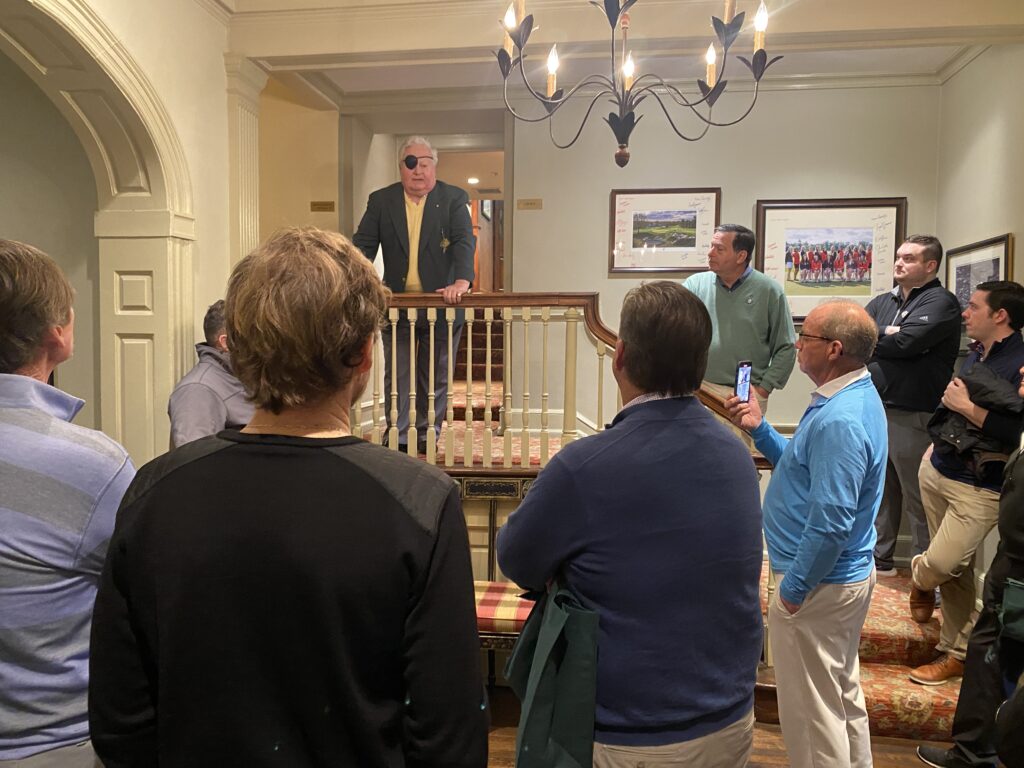
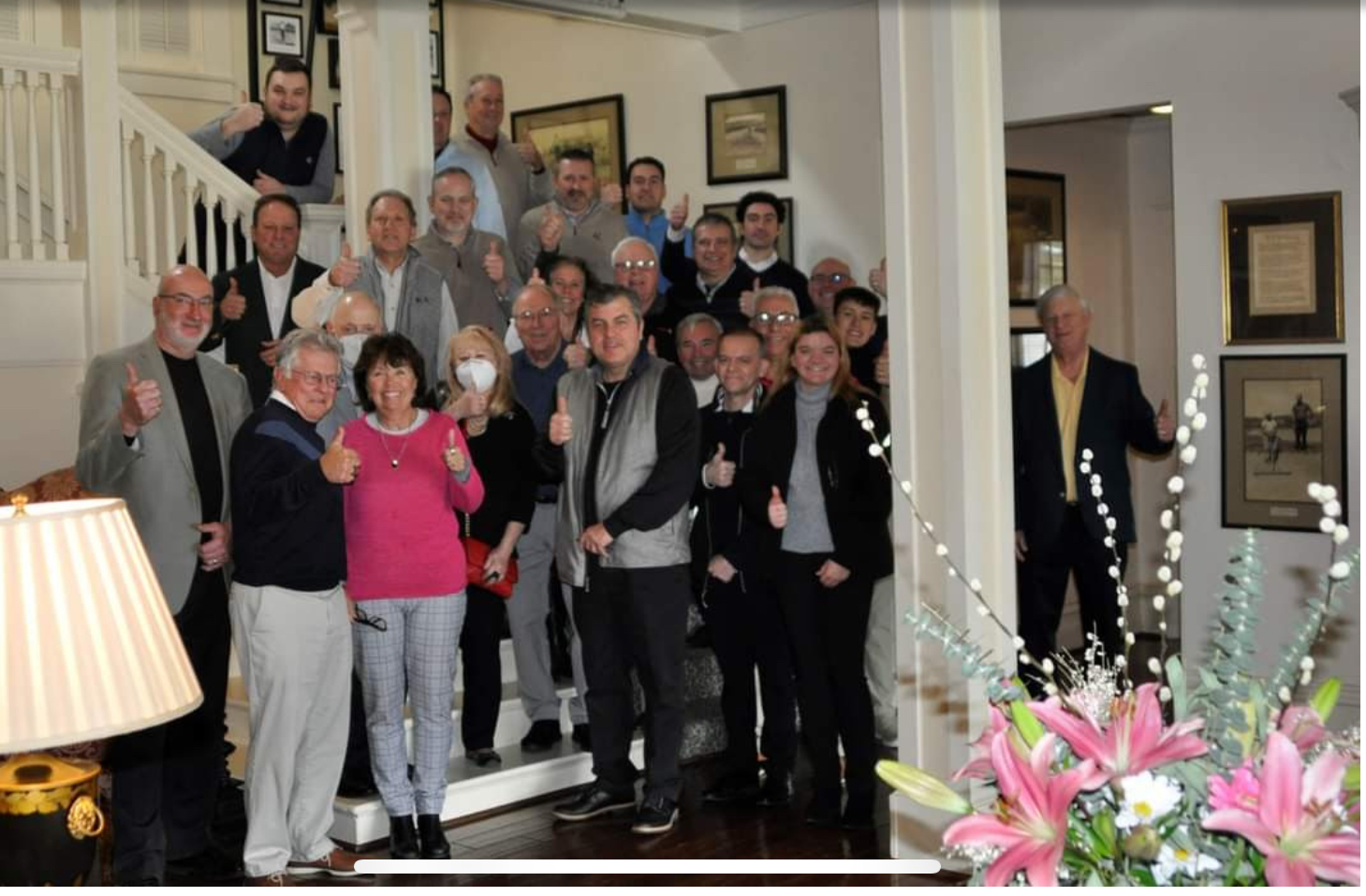
GHS Regional events
Other recent visits included Latrobe CC, Oakmont CC (image on the left), Columbia CC, and Bellview CC, to name just a few, in addition to the many hickory tournaments, gatherings and mini-trade shows organized by the GHS.
Eras of Golf Ball Collecting
Gutta Percha 1848-1902 Era
Discovered by chance as a useful substance for golf balls, gutta percha balls in their early years are highly desired by collectors. The early balls were smooth and flew erratically. Golfers then discovered that the scratches, dents and injuries delivered to these balls actually straightened their flight. Thus began decades of exploration in surface manipulation with grooves, dimples, pimples (called brambles), mesh, and any number of other patterns. Collectors of gutta percha balls rate them according to patterns, age, and, of course, condition. As with featheries, auction prices can be in the many thousands of dollars with prized samples going for quite breathtaking sums. Here, too, is the realm of the expert collector. The casual collector would do well to find second or third rate balls in less desirable condition to at least display for their historical value in the evolution of the ball.

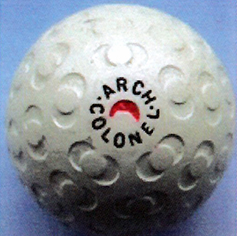
Eras of Golf Ball Collecting
Early rubber Core – 1900-1920 Era
Around the turn of the 20th century, the golf ball took another leap forward with the invention of the wound, rubber core ball. Supplanting the gutty over a period of just a few years, the rubber core, or “bounding billy” as the early ball was known, took off, literally, with golfers who discovered its penchant for to add distance to their games. The early balls varied in size and weight. Core materials varied widely as inventors tried almost everything from a hollow core, to compressed air, honey, steel, a radioactive substance, and, in one bizarre instance, the pizzle (penis) of a bull! Yes, you read that right. Such were the many patterns, weights, cores, that collecting balls from this period involves much research to understand the many patents and varieties. It is a particularly rich period for collectors and balls can be found ranging from reasonable prices to very high for prized and rare patent balls.
Eras of Golf Ball Collecting
Rubber Core 1920-1940 Era
The ball was still undergoing experimentation as manufacturers jockeyed for position in the market. Surface patterns in the early 20s were just as inventive and unusual as the earlier decade. As time wore on, the golf ball market began to settle down as more consistent manufacturing processes took hold and key makers began to dominate. The collector for this period will look for early maker names and try to assemble a progression that shows the evolution of both the ball and its marketing and maker iterations.
Characteristics of rubber core collecting involve looking for moulded or hand-cut gutties; wrapped and uwrapped balls, golf ball boxes (fascinating in their colorful varieties), even fakes, which have, when known, a certain collectible appeal. Wooden balls, too, were available for short time during war years.
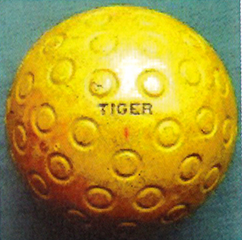
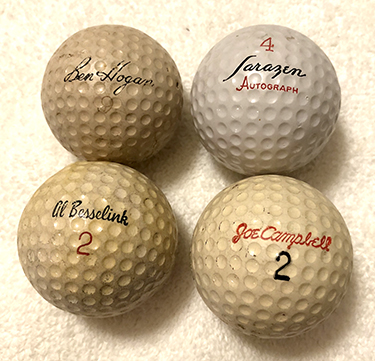
Eras of Golf Ball Collecting
1940s-Current Era
Collectors of balls for this period have many choices should they wish to focus on a particular niche, as these include balls with logos of from anything to universities to sports clubs and everything in between; corporate brands (logos); images of any number of things from animals to birds; joke balls, balls with the names of professional golfers, sometimes in script; autographed balls, itself a category as collectors often like to build a display of balls that the golfer him or herself has signed.
